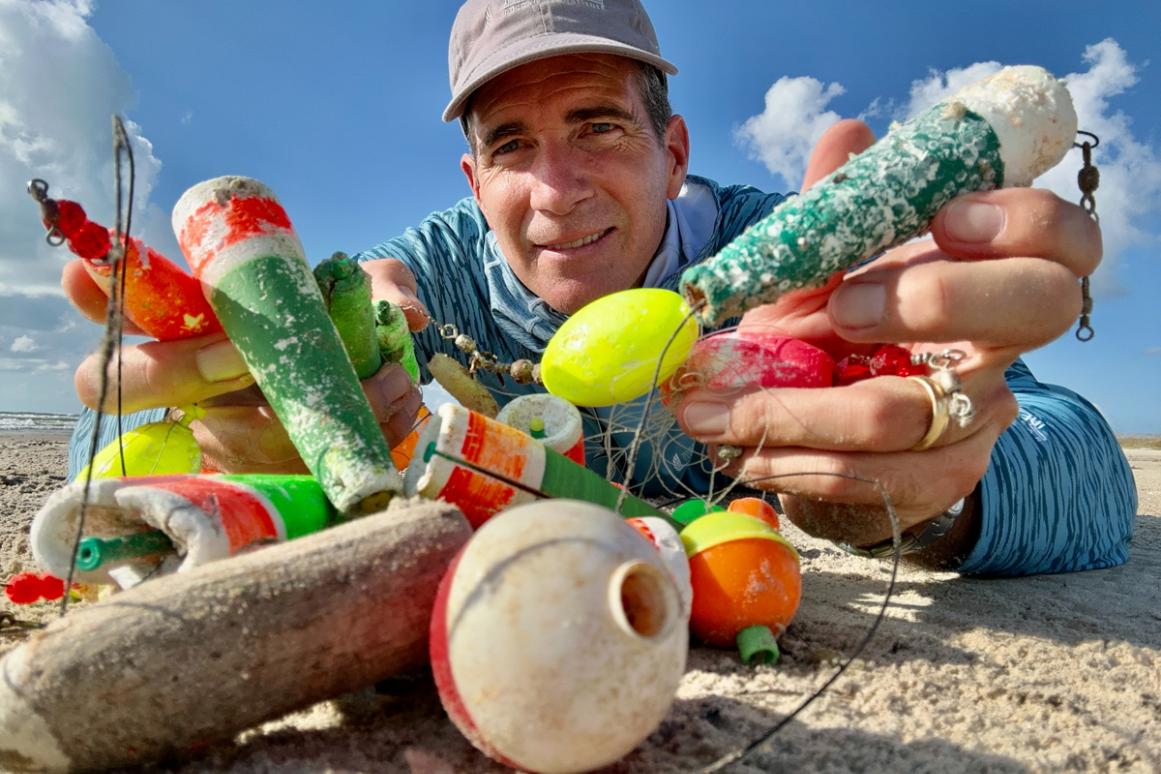Big Adventure

A walk on the beach can be a lot of things — a chance to disconnect, exercise, relax, or even hunt for treasure. For Jace Tunnell, Director of Community Engagement at the Harte Research Institute for Gulf of Mexico Studies (HRI) at Texas A&M-Corpus Christi, it’s all that, and so much more!
Tunnell’s wildly popular “Beachcombing” video series details his walks along many Texas beaches as he examines the varied — and sometimes strange — creatures that wash ashore, along with the weird, fascinating, creepy, and sometimes historic marine debris that finds its way to the sand.
The series began at the onset of the COVID-19 pandemic in 2020 when beaches were closed to prevent the public from congregating together. “The Beachcombing series was a way to bring the beach to the people,” Tunnell said. “At the end of 2020, after 30 episodes, we thought we had talked about everything and were going to stop production of the film series, but each week something new kept washing in and here we are in 2024 with enough content for new videos to nearly get us through the entire year!”
Tunnell said he doesn’t envision a time when there won’t be new content available for the video series simply due to the mysteries of the Gulf. While Tunnell’s videos and photos are certainly entertaining, they largely serve to educate audiences about coastal and marine species, as well as draw attention to the greater issue of marine debris. “I’ve found over 30 messages in a bottle, a prosthetic leg, a live five-and-a-half-foot alligator, rare blue sea dragons, a safe, three bowling balls, bales of rubber from a 1944 sunken ship, lots of creepy beach dolls, escape pods, illegal fishing boats, homemade rafts, and a mermaid statue,” Tunnell said.
In more recent episodes, Tunnell has taken items he’s found back to HRI researchers for further explanation of their origins and their roles in the ecosystem. This might involve deep dives into the world of serpulid tube worms, exploring the complexities of ocean acidification, or even learning what a leptocephalus is (a small, transparent eel larva) through the help of HRI’s Center for Sportfish Science and Conservation. “We want to show the audience that TAMU-CC has world-class researchers working on every aspect of the Gulf of Mexico,” Tunnell said. “It gives viewers a chance to hear from the experts, see their labs, and develop a connection to the university and the beach that perhaps they didn’t realize was right there in their own backyard.”
Tunnell hopes the Beachcombing series will inspire audiences to care more about what is happening along Gulf shorelines, which will lead to the conservation and protection of our oceans, both for current and future generations.
